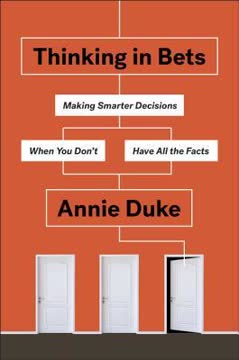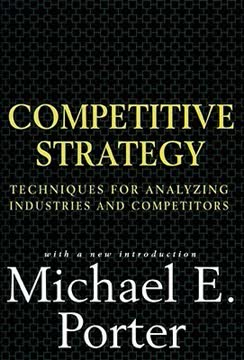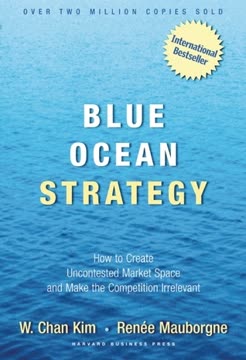Key Takeaways
1. Strategy is about making choices to win
Strategy is an integrated set of choices that uniquely positions the firm in its industry so as to create sustainable advantage and superior value relative to the competition.
Definitive choices. Strategy requires making explicit choices about what to do and what not to do. It's not about having a vision or a plan, following best practices, or simply optimizing current operations. Strategy involves choosing a specific set of activities that will deliver unique value to customers and create a sustainable competitive advantage.
Winning focus. The ultimate goal of strategy is to win in the marketplace. This means providing better value to customers than competitors do, on a sustainable basis. Winning should be at the heart of any strategy, driving tough choices and substantial investments. Companies that merely aim to participate, rather than win, often fail to make the necessary choices and investments to succeed.
Integrated approach. A successful strategy consists of five interconnected choices:
- Winning aspiration
- Where to play
- How to win
- Core capabilities
- Management systems
These choices must be coordinated and mutually reinforcing to create a coherent strategy that drives competitive advantage.
2. Define your winning aspiration clearly
What matters is winning. Great organizations—whether companies, not-for-profits, political organizations, agencies, what have you—choose to win rather than simply play.
Ambitious goals. A winning aspiration goes beyond simply participating in a market. It defines what winning looks like for the organization in clear, ambitious terms. This could mean being the industry leader, transforming an industry, or creating significant value for customers in a unique way.
Customer-centric focus. Winning aspirations should be framed around customers and their needs, rather than internal metrics or financial goals. For example, P&G defined winning as improving consumers' lives with their products, which drove innovation and customer focus throughout the organization.
Guiding principle. A clear winning aspiration serves as a north star for all other strategic choices. It helps align the organization and provides a benchmark against which to evaluate options and make tough decisions. Without a well-defined aspiration to win, companies risk settling for mediocrity or making inconsistent strategic choices.
3. Choose where to play and how to win
The heart of strategy is the answer to two fundamental questions: where will you play, and how will you win there?
Where to play. This choice defines the specific playing field for the company. It includes decisions about:
- Which geographic markets to serve
- Which customer segments to target
- Which categories or product lines to offer
- Which channels to use
- Which stages of the value chain to participate in
How to win. This choice outlines the unique approach the company will use to succeed in its chosen playing field. There are two fundamental ways to win:
- Cost leadership: Delivering similar value at a lower cost than competitors
- Differentiation: Providing unique value that customers are willing to pay a premium for
Reinforcing choices. Where-to-play and how-to-win choices must be mutually reinforcing. A company's approach to winning should be tailored to its specific playing field, leveraging its strengths and addressing customer needs in a way that's difficult for competitors to match.
4. Develop and leverage core capabilities
An organization's core capabilities are those activities that, when performed at the highest level, enable the organization to bring its where-to-play and how-to-win choices to life.
Identify key activities. Core capabilities are the essential activities that allow a company to deliver on its where-to-play and how-to-win choices. These are not generic strengths, but rather the specific abilities that create competitive advantage in the chosen market.
Build systems of activities. The most powerful core capabilities operate as a system of mutually reinforcing activities. This creates an advantage that is difficult for competitors to replicate, as the strength comes from the interplay of multiple capabilities rather than any single factor.
Invest strategically. Once core capabilities are identified, the organization should invest disproportionately in developing and maintaining them. This may involve:
- Training and development programs
- Dedicated resources and teams
- Specialized technologies or processes
- Partnerships or acquisitions to fill capability gaps
5. Implement supporting management systems
Without supporting structures, systems, and measures, strategy remains a wish list, a set of goals that may or may not ever be achieved.
Align processes. Management systems should be designed to support and reinforce the strategic choices. This includes processes for:
- Strategy creation and review
- Resource allocation
- Performance measurement
- Incentive structures
- Communication and decision-making
Foster strategic thinking. Implement systems that encourage ongoing strategic dialogue throughout the organization. This could involve regular strategy reviews, cross-functional collaboration, or training programs to build strategic capabilities at all levels.
Measure what matters. Develop specific, measurable outcomes that align with the strategy. These metrics should span financial, customer, and operational dimensions to provide a holistic view of strategic progress. Regularly review and adjust these measures to ensure they continue to drive the right behaviors and outcomes.
6. Use the strategy logic flow for analysis
To make good choices, you need to make sense of the complexity of your environment. The strategy logic flow can point you to the key areas of analysis necessary to generate sustainable competitive advantage.
Structured approach. The strategy logic flow provides a framework for analyzing the key factors that inform strategic choices. It consists of four main areas:
- Industry analysis
- Customer analysis
- Relative position analysis
- Competitive analysis
Iterative process. While the flow generally moves from left to right, strategy development is not a linear process. Insights gained in one area may require revisiting earlier assumptions or analyses.
Focus on key issues. The logic flow helps prioritize the most critical questions and analyses, rather than trying to analyze everything at once. This targeted approach saves time and resources while ensuring the most important factors are considered.
7. Reverse-engineer possibilities to make strategic choices
Rather than asking individuals to find that answer for themselves and then fight it out, this approach enables the team to uncover the strongest option together.
Collaborative process. The reverse-engineering approach shifts strategy discussions from advocacy of preconceived ideas to a collaborative exploration of possibilities. This reduces conflict and leads to more robust strategies with stronger buy-in.
Key steps:
- Frame the choice
- Generate strategic possibilities
- Specify conditions for success
- Identify barriers to choice
- Design and conduct tests
- Make the choice
Focus on "what would have to be true." Instead of arguing about what is true, teams explore what would need to be true for each possibility to be successful. This reframes the discussion and surfaces key assumptions and concerns in a constructive way.
8. Avoid common strategy traps and recognize signs of winning
There is no perfect strategy—no algorithm that can guarantee sustainable competitive advantage in a given industry or business. But there are signals that a company has a particularly worrisome strategy.
Strategy traps to avoid:
- The do-it-all strategy: Failing to make choices
- The Don Quixote strategy: Attacking the strongest competitor head-on
- The Waterloo strategy: Fighting on too many fronts simultaneously
- The something-for-everyone strategy: Trying to serve all segments at once
- The dreams-that-never-come-true strategy: Aspirations without concrete choices
- The program-of-the-month strategy: Pursuing generic industry strategies
Signs of a winning strategy:
- A distinctive activity system
- Passionate customers and clear non-customers
- Profitable competitors
- Superior resources for reinvestment
- Competitors attacking each other, not you
- Customers looking to you for innovation
9. Strategy is an ongoing process of adaptation
All companies need to evolve their strategies—to improve, sharpen, and change to stay competitive and, ultimately, to win year after year.
Continuous improvement. Strategy is not a one-time exercise but an ongoing process of refinement and adaptation. Regularly revisit and challenge strategic assumptions to ensure they remain valid in changing market conditions.
Proactive approach. The best companies evolve their strategies before financial results start to decline. They use leading indicators and market insights to identify shifts early and adjust course accordingly.
Balance stability and flexibility. While consistency in strategic direction is important, be prepared to make bold changes when necessary. Create a culture that values both strategic discipline and the ability to innovate and pivot when the competitive landscape shifts.
Last updated:
FAQ
What's Playing to Win about?
- Focus on Strategy: Playing to Win by A.G. Lafley and Roger L. Martin is a guide on developing effective business strategies through specific choices to win in the marketplace.
- Strategic Framework: It introduces a strategic choice cascade, including five essential choices: winning aspiration, where to play, how to win, core capabilities, and management systems.
- Real-World Application: The book uses Procter & Gamble's transformation as a case study to illustrate the application of these strategic principles.
Why should I read Playing to Win?
- Practical Insights: The book offers actionable insights and frameworks applicable across various industries, demystifying the strategy-making process.
- Proven Success: It shares experiences from P&G, demonstrating how strategic choices led to significant growth, providing real-world examples of successful strategy implementation.
- Enhance Strategic Thinking: Readers will develop a deeper understanding of strategic thinking and decision-making, crucial for driving growth and competitive advantage.
What are the key takeaways of Playing to Win?
- Strategy is Choice: Strategy involves making specific choices to win in the marketplace, focusing on what to prioritize and what to avoid.
- Five Essential Choices: The strategic choice cascade includes winning aspiration, where to play, how to win, core capabilities, and management systems, all interconnected for a coherent strategy.
- Iterative Process: Strategy development is iterative, requiring revisiting and refining choices as new insights emerge, helping organizations adapt to changing conditions.
What is the strategic choice cascade in Playing to Win?
- Five Key Components: It consists of winning aspiration, where to play, how to win, core capabilities, and management systems, each building on the others.
- Integrated Framework: These choices are interconnected and should reinforce one another, ensuring alignment with the overall strategy.
- Guiding Decision-Making: The cascade guides leaders in making informed decisions about resource allocation, market entry, and competitive positioning.
How do the authors define winning in Playing to Win?
- Winning Aspiration: Winning is defined as having a clear and compelling aspiration that guides the organization’s strategy, focusing on creating value for consumers.
- Consumer-Centric Focus: It involves understanding and meeting consumer needs better than competitors, prioritizing consumer insights in strategic choices.
- Long-Term Perspective: Winning involves building sustainable competitive advantages for long-term success, requiring ongoing investment in capabilities and innovation.
What is the importance of "where to play" in Playing to Win?
- Defining the Playing Field: "Where to play" refers to the specific markets, segments, and geographies where an organization chooses to compete.
- Strategic Focus: Organizations should concentrate on the most attractive opportunities, allowing for deeper engagement with target consumers and better resource allocation.
- Interconnected Choices: This choice must align with the "how to win" strategy to create a coherent approach, informing competitive tactics.
How does Playing to Win suggest organizations should approach competition?
- Understand Competitors: Organizations should analyze competitors thoroughly, identifying strengths and weaknesses to craft strategies leveraging competitive advantages.
- Choose Unique Value Propositions: Differentiation through unique value propositions, such as innovation or superior service, is crucial.
- Avoid Head-On Battles: Companies should avoid direct confrontations with dominant competitors unless they have a clear advantage, seeking less contested areas instead.
What are the core capabilities discussed in Playing to Win?
- Consumer Understanding: A key capability is understanding consumer needs and preferences, driving effective product development and marketing strategies.
- Brand Building: Strong brand-building capabilities create consumer loyalty and differentiate products, leading to a competitive edge.
- Innovation and Go-to-Market Ability: Organizations must excel in innovation and go-to-market strategies to sustain competitive advantage.
What does Playing to Win say about management systems?
- Support Strategic Choices: Management systems should enable effective implementation of strategic choices, supporting necessary capabilities.
- Measure Progress: They include metrics and performance indicators to track progress toward strategic goals, allowing for strategy adjustments.
- Foster Alignment: Management systems ensure alignment across the organization, helping all teams work toward the same strategic objectives.
What is the strategy logic flow mentioned in Playing to Win?
- Analytical Framework: The strategy logic flow guides organizations in assessing their strategic context through industry analysis, customer value analysis, relative position, and competitive analysis.
- Seven Key Questions: It poses seven questions to explore current reality and identify strategic choices, encouraging thorough analysis.
- Holistic Understanding: The logic flow ensures all relevant factors are considered, fostering creativity in strategy development.
What is the reverse-engineering process in Playing to Win?
- Strategic Exploration: This process explores strategic possibilities by asking what must be true for a given option to succeed, encouraging critical thinking.
- Seven Steps: It includes framing the choice, generating possibilities, specifying conditions, identifying barriers, designing tests, conducting tests, and choosing the best option.
- Collaboration and Buy-In: The process fosters collaboration and buy-in, transforming conflicts into constructive discussions for stronger strategic choices.
What are some common strategy traps mentioned in Playing to Win?
- Do-It-All Strategy: Failing to make clear choices and trying to prioritize everything leads to diluted efforts.
- Waterloo Strategy: Starting multiple competitive battles simultaneously can overwhelm resources, so focus on manageable fronts.
- Dreams-That-Never-Come-True Strategy: Setting high-level aspirations without actionable strategies leads to failure; concrete choices are necessary.
Review Summary
Playing to Win: How Strategy Really Works is highly regarded for its practical framework on business strategy, drawing from A.G. Lafley's experience as P&G's CEO. Readers appreciate the real-world examples and clear explanations of strategic concepts. The book's focus on making choices to achieve competitive advantage resonates with many. While some find it too P&G-centric or less relevant for smaller businesses, most consider it a valuable resource for understanding and implementing effective business strategies. The book's emphasis on winning and its accessible approach to complex topics are frequently praised.
Similar Books










Download PDF
Download EPUB
.epub digital book format is ideal for reading ebooks on phones, tablets, and e-readers.





